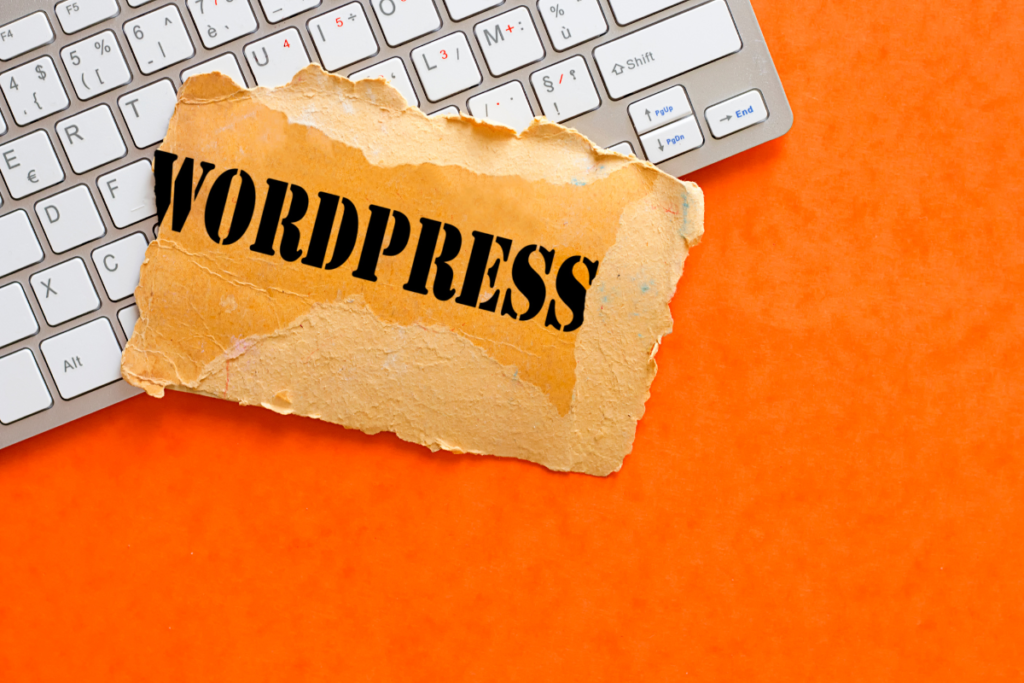
Introduction
Upskillrocket.in Creating a WordPress website is an essential skill in today’s digital landscape. With WordPress’s user-friendly content management system, anyone, whether a seasoned web developer or a beginner, can build and manage a website effectively.
This step-by-step guide will take you through the entire process, from selecting a domain and setting up hosting to customizing themes and managing content. Whether you’re a blogger, an entrepreneur, or a nonprofit organization, WordPress provides a solid foundation for establishing your online presence.
Join us on this journey of discovery and creation and soon you’ll have a functional and visually appealing website that represents you or your brand to the world.
A Step-by-Step Guide to Building Your Website with WordPress
Step 1. Choosing a Domain and Web Hosting
Selecting a Suitable Domain Name
When choosing a suitable domain name for your WordPress website, you should follow these steps:
- Generate relevant keywords that are related to your website’s niche.
- Keep the domain name short and memorable.
- Avoid using numbers and hyphens to prevent confusion.
- Check the availability of the domain name using a domain registrar.
- Consider purchasing different domain extensions to protect your brand.
Pro-tip: Select a domain name that reflects your brand identity and is easy to spell and pronounce.
2. Choosing the Right Web Hosting Provider
Choosing the Right Web Hosting Provider is crucial when creating a website with WordPress. Factors to consider include reliability, speed, security, customer support, and price. It is recommended to compare options such as Bluehost, SiteGround, and HostGator to make an informed decision about a web hosting provider that meets your needs and budget.
Step 2: Installing WordPress
1. Manual Installation
- Get the most recent WordPress package by visiting the official website.
- Extract the downloaded package to a local folder on your computer.
- Create a new database and user on your web hosting control panel.
- Upload the extracted WordPress files to your web hosting account using an FTP client.
- Configure the wp-configure php file by entering your database details.
- Run the WordPress installation script by accessing the installation page on your web browser.
- To finish the installation procedure, follow the directions displayed on the screen.
- Login to your WordPress admin dashboard using the provided credentials.
- Customize your website by selecting a theme and installing the necessary plugins.
In the early days of WordPress, manual installation was the only option available. It required users to manually download, upload, and configure files. With advancements in technology, WordPress now offers one-click installation options for easy setup and convenience. Nonetheless, manual installation remains a viable option for users who prefer more control over their website’s configuration.
2. One-Click Installation
- To begin with, one should select a reliable web hosting provider that offers one-click installation for WordPress.
- Afterwards, log in to your web hosting account and navigate to the control panel.
- Look for a section in the control panel called “One-Click Installs” or “Softaculous”.
- Next, click on WordPress and then choose the domain where you wish to install WordPress.
- Fill in the necessary details such as your website name, admin username, and password.
- Finally, click on the “Install” button and patiently wait for the installation process to be completed.
Fun Fact: One-click installation simplifies the process of setting up a WordPress website, even for beginners!
Step 3: Setting Up Your Website
Setting Up Your Website Now that you have reached step 3 in building your website with WordPress, it is time to set up your website and give it a unique touch. In this section, we will guide you through the process of customising your website design and installing the necessary plugins.
Prepare yourself to unleash your creativity and elevate your website to a new level with personalised design elements and powerful plugins that will enhance its functionality. Let us delve into the details and make your website truly distinctive.
1. Customizing Your Website Design
Customising your website design is a crucial step in creating a unique and visually appealing WordPress website.
- Choose an appropriate theme that aligns with your brand image and overall website objectives.
- Personalise the colour scheme, fonts, and layout to establish a consistent visual identity.
- Incorporate your logo and modify the header and footer sections to reinforce your brand.
- Make use of widgets and plugins to add functionality and enhance the design.
Fact: WordPress provides a wide range of free and premium themes, enabling you to discover the ideal design for your website.
2. Installing Essential Plugins
- Choose plugins based on the specific needs of your website.
- Research popular and highly-rated plugins for different functionalities.
- Install plugins by going to the “Plugins” section in your WordPress dashboard.
- Select “Add New” and look for the plugin you want.
- Click “Install Now” and then activate the plugin.
- Configure the settings of the plugin to match your preferences.
- Regularly update installed plugins to ensure optimal performance and security.
Step 4: Creating and Managing Content
1. Adding and Editing Pages
- To add a new page, first access the WordPress dashboard and navigate to the Pages section.
- To start creating a new page, click “Add New”.
- Provide a title for your page and add content using the visual editor.
- You can format your content by adding headings, paragraphs, lists, and more.
- If you want to include images or other media files, you can upload and insert them into your page.
- Before publishing, it’s a good idea to preview your page to ensure it looks as desired.
- Once you’re satisfied, save your changes or publish the page to make it live on your website.
- If you need to edit an existing page, go to the Pages section and locate the page you want to modify.
- Click on the page to open the editor and make any necessary changes.
- Remember to update or save the changes after editing the page.
2. Creating Blog Posts
- Choose a captivating and relevant title for your blog post.
- Plan the structure of your blog post by outlining the main points and subheadings.
- Begin writing the introduction, providing a brief overview of what the blog post will cover.
- Develop the body of the blog post, providing detailed and informative content.
- Include appropriate examples, statistics, or anecdotes to support your points.
- Write a compelling conclusion that summarises the main points and offers a call to action.
- Proofread and edit your blog post for clarity, grammar, and spelling errors.
- Add visually appealing images or multimedia to enhance the overall presentation of your blog post.
- Optimise your blog post for SEO by including relevant keywords and meta tags.
- Publish your blog post, promote it on social media, and engage with your readers through comments or discussions.
Step 5: Optimizing Your Website
1. Search Engine Optimization
Search Engine Optimisation is an important aspect of building a website. To optimise your website for search engines, you should follow these steps:- Research relevant keywords for the content on your website.
- Optimise your website’s meta titles and descriptions using targeted keywords.
- Create valuable, original content that is high-quality and appeals to your target audience.
- Optimise your website’s page titles, headings, and URLs by including relevant keywords.
- Improve your website’s load speed to enhance user experience and improve search engine rankings.
2. Website Performance and Speed Optimization
- Reduce loading time by optimizing image sizes.
- Avoid slowing down the website by minimizing the use of plugins.
- Improve website performance by using caching plugins.
- Minimize CSS and JavaScript files to optimize code.
- Select a reliable web hosting provider with fast servers.
Step 6: Enhancing Website Functionality
1. Adding Contact Forms
Adding contact forms to your WordPress website is a straightforward process.
Follow these steps to add a contact form:
- Choose a contact form plugin or tool that is compatible with WordPress.
- Install the selected plugin or tool on your WordPress website.
- Create a new contact form using the plugin’s interface.
- Add fields such as name, email, subject, and message to the contact form.
- Customize the appearance and design of the contact form to match your website’s aesthetic.
- Configure settings for the contact form, such as email notifications or redirecting to a thank you page.
- Embed the contact form on a page, post, or widget area of your WordPress website.
- Test the contact form to ensure that it is functioning correctly and sending messages to the desired recipient.
2. Integrating Social Media
Integrating social media is crucial for expanding the reach and engagement of your website. To achieve this, you need to connect your website to popular social media platforms such as Facebook, Twitter, and Instagram. Additionally, it is recommended to add social sharing buttons to your content, allowing visitors to easily share it on their social media profiles.
Another effective way to keep visitors updated with your latest posts and activities is by showcasing your social media feeds on your website. Furthermore, enabling social login options will allow users to log in using their social media accounts.
Frequently Asked Questions
It works by providing a user-friendly interface where you can customize the appearance and functionality of your website using themes, plugins and built-in tools.
WordPress.org allows you to host your own website, giving you more control over customization and allowing you to use third-party providers for hosting. WordPress.com, on the other hand, hosts your website for you, eliminating the need for software downloads or server management.
Yes, with a WordPress.com plan, you can get your own domain like yourgroovydomain.com for free for the first year.
go to "Pages → Add New Page" in your dashboard. From there, you can start with a blank page or use pre-built page layouts to create additional pages such as an About page or a Contact page.
To back up your WordPress website, you can use plugins or backup services that are available for WordPress.
Using WordPress to build a website for a small business has its pros and cons. Some advantages include cost savings by eliminating the need for a web developer or designer. However, it also requires time and effort to learn and manage the platform and customization options may be more limited with WordPress.com compared to self-hosted WordPress.org.
